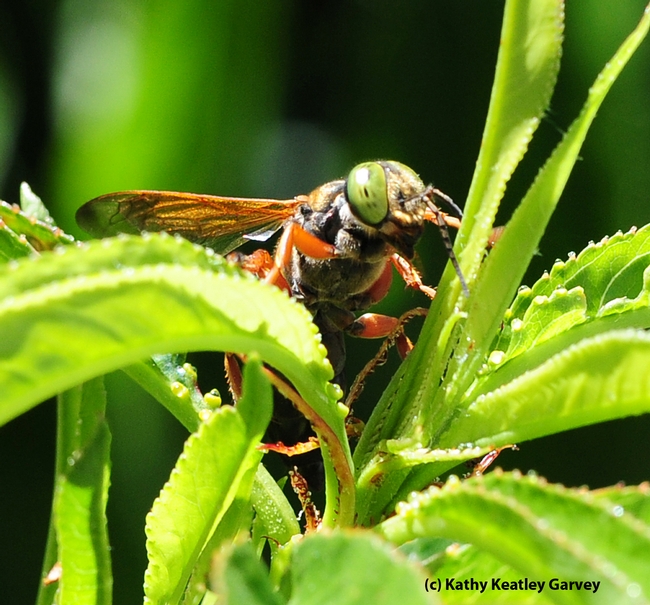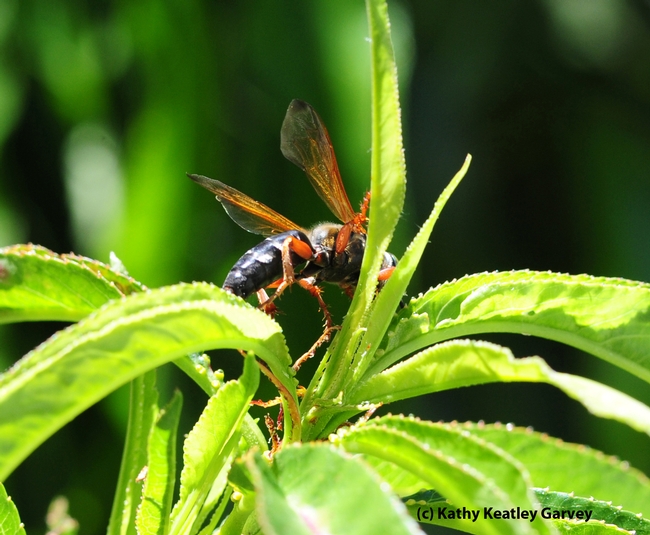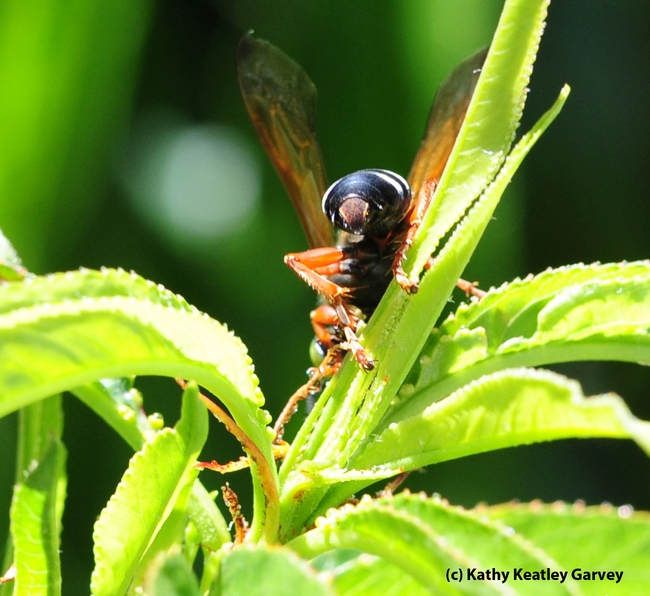We saw her touch down in our nectarine tree last weekend.
Big green compound eyes glowed at us.
She moved up and down a branch, foraging for food, and then took off.
A wasp. The carnivore cousin of the vegetarian honey bee. They belong to the same order, Hymenoptera.
The green-eyed wasp? Genus Tachytes, as confirmed by noted "wasp woman" Lynn Kimsey, director of the Bohart Museum of Entomology and professor of entomology at the University of California, Davis. The green eyes are a distinguishing feature of the genus.
Tachytes is a member of the Crabronidae family or "sand-loving wasps." The females burrow into sandy soil, and provision their nest with such paralyzed prey as katydids and grasshoppers. Meanwhile, their cousins, the honey bees, are out collecting nectar and pollen.
If you're looking for something to do this summer, be sure to check out the Bohart Museum, located in Room 1124 Academic Surge, corner of La Rue Road and Crocker Lane (formerly California Drive). Regular hours are from 9 a.m. to noon and from 1 to 5 p.m., Monday through Thursday. It is closed to the public on Fridays and on major holidays. Admission is free.
There's always something to see and do at the museum, what with more than seven million insect specimens collected from around the world. And you can meet the critters in the "live petting zoo," including walking sticks and Madagascar hissing cockroaches.
Be sure to check out the Hymenoptera specimens in the museum's display cases. You'll be amazed.
Attached Images:

Green-eyed wasp, genus Tachytes, in a nectarine tree. This one is a female, as identified by Lynn Kimsey, director of the Bohart Museum of Entomology.(Photo by Kathy Keatley Garvey)

Green-eyed wasp, Tachytes sp., foraging on a nectarine tree. (Photo by Kathy Keatley Garvey)

A little somersault by a green-eyed wasp, genus Tachytes. (Photo by Kathy Keatley Garvey)